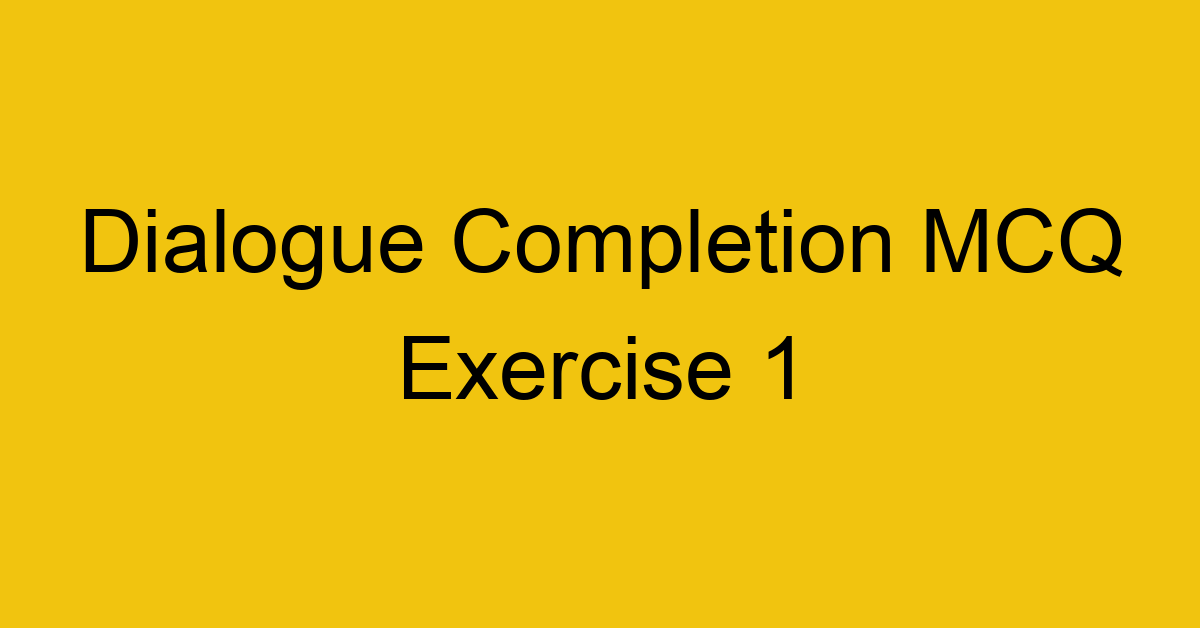Reading Comprehension Multiple Choice Questions Exercise 7
Question 1 |
(Please note: The following questions are related to a specific reading passage, available solely before the first question. Remember, referring back to the reading text while answering the questions may be helpful to ensure accuracy.)
Cosmetics have been used for thousands of years to improve the appearance of people and also to help keep them clean and healthy. We know that cosmetics were often used in ancient Egypt. Many beautiful jars and bottles which hold oils and perfumes have been found and can be seen in museums. Men, in some primitive tribes and societies, also paint their faces and bodies. This is usually done to show that they are of a high rank. Sometimes, however, it is used to show that the people of that group are taking part in a ceremony. Today, in our society, cosmetics are usually used to improve the appearance of people and to make them appear healthy. It is not difficult to obtain cosmetics today. Many are made affordably from synthetic materials and vegetable oils.
Cosmetics have been _____.
A | made of synthetic fibres since ancient times |
B | found in jars in museums |
C | used for the body only in modern times |
D | for ceremonies |
E | used by people since ancient times |
Question 2 |
Cosmetics not only make people look good but also _____.
A | help maintain health in our society |
B | established the social rank of people |
C | help maintain an appearance of health |
D | can be used in place of vegetable oils |
E | are placed in museums |
Question 3 |
Egyptians used jars and bottles _____.
A | to hold both synthetic materials and vegetables |
B | to give primitive tribes cosmetics to try out |
C | to place into their museums |
D | for both decoration and to hold their cosmetics |
E | to help them with their cleaning |
Question 4 |
When Christopher Columbus set sail in 1492 from Spain, his destination was not America. In fact, he did not even know that the vast American continents existed. His purpose in sailing west was to reach the Indies faster than other ships which used a route around Africa. The Indies were a source of riches for Europeans during those days. The treasures of spices, silks, etc., were greatly valued by Europeans but were extremely difficult to obtain. When Columbus reached the islands that are now known as the West Indies, he believed he had reached Asia and he called the people living there 'Indians'.
In 1492, Columbus _____.
A | wished to go to America |
B | started travelling towards Asia |
C | travelled by way of Africa to Asia |
D | wanted to become rich by sailing to America |
E | was looking for the treasures of America |
Question 5 |
Spices, silks and other treasures _____.
A | were found around the world |
B | were taken to Asia to be sold |
C | were from the West Indies |
D | from Asia were brought to Europe |
E | from Spain were taken to the Indies |
Question 6 |
Columbus believed _____.
A | the destination for Europeans was Asia via America |
B | Europeans should become rich |
C | the riches of the West Indies were better than those of Asia |
D | Spain could be reached via the Asian route |
E | he headed for India |
Question 7 |
In order to create the first clock, humans had to divide the day into hours and minutes. The Babylonians were the first to divide the hour into 60 minutes and the minute into 60 seconds. The Egyptians created shadow clocks, which later became sundials. Around 100 B.C., the first hourglass was used, typically timed for one hour. The Greeks and Romans later used water clocks, which had been developed by the Chinese and were called clepsydras. The first mechanical clocks were developed in Europe in the 1300s. These were improved, and in 1656, a Dutchman designed the first pendulum clock, which was more accurate than other clocks of the time. After World War II, the atomic clock was developed and remains the world's most accurate clock. The quartz crystal clocks and watches developed in the 1960s and '70s are also extremely accurate, second in accuracy only to the atomic clock.
The first clocks _____.
A | were made by the Babylonians |
B | were based on a one hour schedule |
C | could only be made after the day had been divided into time periods |
D | were the clepsydras |
E | cannot be considered a true clock |
Question 8 |
Today _____.
A | the sundials of the Egyptians are used instead of the atomic clock |
B | quartz crystals are much more dependable than the atomic clocks of WW II. |
C | mechanical clocks are used in Holland |
D | hourglasses can be designed for up to one hour |
E | historians think that the Babylonians are responsible for the trend towards measuring time |
Question 9 |
The Chinese _____.
A | taught the Greeks how to tell time |
B | learned how to tell time from the Greeks and Romans |
C | used the same type of water clock as the Greeks and Romans did |
D | preferred the clepsydras to mechanical clocks |
E | used sundials before the Egyptians |
Question 10 |
Ömer Seyfeddin was born on 11 March 1884, in Gören, Balikesir. His father was a frequently relocated military officer, so Ömer and his mother moved to Istanbul for his education. After completing his education, he worked as a teacher for a few years before entering the armed forces. He completed his military service in 1911, but was recalled into the army during the Balkan Wars. He was captured and imprisoned by the Greeks in 1913 while fighting. A year later, he returned to Istanbul and worked as the head writer of a major magazine for a while. In 1914, he was appointed as a teacher at Kabataş High School, a position he held until his death. The appeal of Ömer Seyfeddin's stories lies in his unique style and his use of simple modern Turkish. His wide range of story topics was unusual and original for his time. He was a leader in modern Turkish literature, advocating for a simple language style in writing.
Although his military service was completed in 1911, _____.
A | Ömer returned to the army so that he could go to Greece |
B | he did not return to Istanbul until 1914 |
C | he started to work for a major newspaper as a writer |
D | he had to return to the army at the beginning of the Balkan Wars |
E | he remained in the service to be |
Question 11 |
The attraction of his writing style comes from _____.
A | his days as a magazine writer |
B | its simplicity and originality |
C | experiences in the armed forces |
D | the public’s need for the new |
E | the publishers of the novel |
Question 12 |
Due to his usage of a simple language style, _____.
A | he is considered one of the leaders of modern Turkish literature |
B | there was a large amount of disagreement as to his importance as a writer |
C | the public v. as confused by his form of writing |
D | modern literature is not considered to be related to his works |
E | he was unable to reunite with his father |
Question 13 |
During the Gulf War, the development of television and radio news broadcasting became very apparent. CNN reporter Peter Arnett provided live coverage of the situation in Baghdad, the capital city of Iraq. The telephone lines, which were constantly open and filled with minute-by-minute reports of the unfolding events, served as the main means of communication. Although they were not given complete freedom to use their television cameras, the scenes they were able to broadcast were viewed with interest and astonishment worldwide. People all over the world were able to follow the events of the war as they happened, right from their living room television sets.
The Gulf War was the first war in which _____.
A | the telephone was used by broadcasters |
B | the world saw the events of the war on TV |
C | there was moment by moment coverage of a war that was shown on television |
D | the CNN reporter Peter Arnett was able to give coverage of a real war to television viewers |
E | television cameras were used to show the results of a war |
Question 14 |
According to the passage, Peter Arnett was _____.
A | the only television reporter in Iraq during the war |
B | was present in Iraq during the whole period of the war |
C | telephoned in constant reports of what was going on |
D | astonished the world with his reportage |
E | the CNN reporter who told the world what was happening in the capital of Iraq |
Question 15 |
According to the passage, telephone lines _____.
A | were never cut off |
B | served to give all the news |
C | were used for broadcasting |
D | always informing the world |
E | were the only means of communication in the country |
Question 16 |
The famous film star John Wayne's real name was Marion Michael Morrison. He was born in Iowa, USA, on 26 May 1907 and died on 11 June 1979 in Los Angeles. John's forty-year film career included over 250 films. As he was seen as a strong, large man who was quiet but mature, his real name, Marion, did not suit his acting persona.
John Wayne _____.
A | died at the age of 40 |
B | was famous for only western films |
C | was born with the last name Marion |
D | was a mature actor |
E | was an American soldier |
Question 17 |
His film career _____.
A | lasted for 250 films |
B | was of war and western films |
C | started in Iowa |
D | depended on his actual name |
E | lasted for forty years |
Question 18 |
According to the passage, his appearance _____.
A | did not appeal to his audiences |
B | made people think of a man who was not suited to acting |
C | was suitable for the roles of a confident leader |
D | helped his audiences believe his roles |
E | did not help his career |
Question 19 |
Today, historians consider Turkey, along with Egypt and the Fertile Crescent, as one of the birthplaces of civilization. The increased interest in the mountains and plains of Anatolia has led to many archaeological diggings and excavations. These have, in turn, led to increased historical knowledge of the many ancient civilizations that lived in these lands. Discoveries have dated the first humans in Turkey back to Neanderthal man, and the fairly recent finds at Çatal Höyük have produced the remains of the earliest known urban society. The remains of this society, located near Konya, are believed to be 9000 years old. Another recent discovery was the Hattian Culture, believed to have been in existence around 2500 B.C. This group of people lived in central Anatolia. The Hittites, Urartians, Phrygians, Lydians, and Lycians flourished in the Anatolian region one after the other for many years. Later periods, better known to historians, show the influence of the Greeks, Persians, and Romans. With increased archaeological interest in this area of the world, the importance of Turkey, as one of the birthplaces of humanity, is increasing. As investigations continue, who knows how many more previously unknown civilizations will be brought to light?
Turkey is today _____.
A | considered to be one of the first places man settled in |
B | one of the Anatolian civilisations |
C | the remains of the influences of Greeks, Persians and Romans |
D | more interested in its historical findings |
E | the site of importance for civilisation |
Question 20 |
According to the passage, the Anatolian region _____.
A | is the region where man was first born |
B | has many hidden civilisations which will be found in the near future |
C | has been completely investigated by archaeologists |
D | supported the first men to live 9000 years |
E | has produced the remains of the earliest known urban society |
Question 21 |
Archaeological interest in this area _____.
A | is about over because everything has been found |
B | is increasing with the new findings constantly being made |
C | has dwindled in recent years |
D | is based on increased interest towards history |
E | depends on excavations of the Fertile Crescent |
⇦ |
List |
⇨ |
| 1 | 2 | 3 | 4 | 5 |
| 6 | 7 | 8 | 9 | 10 |
| 11 | 12 | 13 | 14 | 15 |
| 16 | 17 | 18 | 19 | 20 |
| 21 | End |






